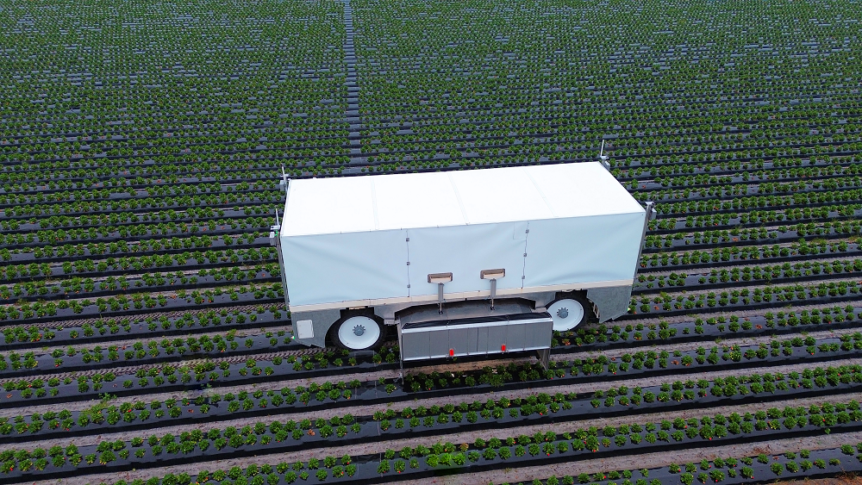
By Clint Thompson
What was once a dream is becoming a reality for Florida strawberry growers hoping to one day utilize automated strawberry harvesters.
Harvest CROO, a company whose focus is developing a fully autonomous strawberry harvester, announced its automated harvest field trials have successfully demonstrated commercial viability.
Gary Wishnatzki, co-founder and Wish Farms owner, discussed the breakthrough and its impact on the Florida industry.
“The stars have really aligned for the need for this; the fact that AI (artificial intelligence) technology has come so far with the processing power that we have now. The whole project has come to this point where we have a working machine and we’re able to process the data in the timeframe that’s required to be efficient,” Wishnatzki said.
“I can say one thing, it’s been a journey to get to the point where we’re at right now. I’ve been quite amazed along the way. Where we are today has been quite an achievement; that we’ve gotten to the point to have a commercially functioning machine. We just now have to get our funding in place to do the roll-out and become a commercial business.”
Technological Advancement
Harvest CROO conducted automated harvest field trials and completed performance rates on par with human harvesting in a commercial operation. Wishnatzki stressed that the processing power needed for the harvester to succeed experienced a major leap over the past year. The latest generation of NVIDIA chips, the platform’s vision processing capability, is now 200 times more powerful.
Couple that with Harvest CROO’s 13 patents and advanced robotic technology, and it led to CROO’s success.
“We went through a number of iterations to get to where we’re at. That started back in 2013 when we started this project. It was then that I recognized we had a serious problem brewing with the availability and cost of labor, with the way things were headed,” Wishnatzki added.
“The improvements we have made over the last couple of years have been quite astounding. It’s been a process to get to where we’re at. There’s been a lot of trial and error and a lot of things we’ve learned along the way.”











